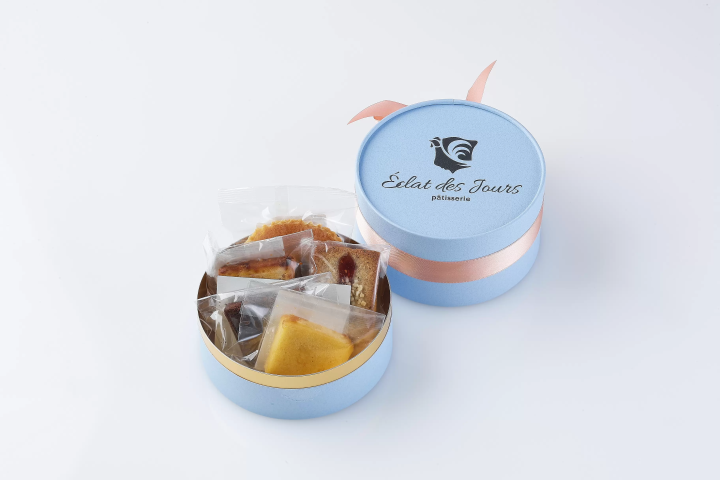[Uji, Kyoto] Showen Kumihimo Uji Main Store: A new frontier in kumihimo weaving, combining handwork and machine work
![[Uji, Kyoto] Showen Kumihimo Uji Main Store: A new frontier in kumihimo weaving, combining handwork and machine work](https://resources.matcha-jp.com/resize/720x2000/2024/09/23-198384.webp)
Hello! I'm Misato Tarui, a member of CEC. In this article, I'd like to introduce you to "Shoen Kumihimo Uji Main Store" and its workshop, which is located a 5-minute walk from JR Uji Station or a 10-minute walk from Keihan Uji Station, halfway to Byodo-in Temple.
Shoen Kumihimo Uji Main Store
The process of making braids until completion
When you hear the word "kumihimo," many people may imagine colorful threads lined up on a wooden stand being braided by hand. The traditional method of making kumihimo is by hand braiding, but at Showen Kumihimo, they produce their products using two methods: hand braiding, where the strings are braided by hand , and machine braiding, where the strings are braided by machine .

There are two main types of braided strings: tubular strings and flat, thinly braided strings.
It is said that the impression of the kumihimo changes depending on the image of the maker. The fun of kumihimo is not only in the design and symbolic hand braiding!

Machine assembly
We were shown how the machines are assembled in the factory.
![[Uji, Kyoto] Showen Kumihimo Uji Main Store: A new frontier in kumihimo weaving, combining handwork and machine work](https://resources.matcha-jp.com/resize/720x2000/2024/09/23-198388.webp)
The braided threads are braided from the bottom up in hand braids , whereas in machine braids they are braided from the top up .

There was a weight attached to the side of the string, and the number 80 was visible. (See the photo below.)
![[Uji, Kyoto] Showen Kumihimo Uji Main Store: A new frontier in kumihimo weaving, combining handwork and machine work](https://resources.matcha-jp.com/resize/720x2000/2024/09/16-197757.webp)
In fact, this is a unit of weight called Momme, which was established in the mid-Edo period. One Momme weighs about 3.7g, and the weight in the photo is about 300g. This weight also serves the function of letting the machine know when there is no thread left during the weaving process.
There is a rail under the colorful threads, and by changing the number of colors and the arrangement of the threads you combine, you can create a variety of designs. This variation is what gives Kumihimo its freedom and is one of its charms.

![[Uji, Kyoto] Showen Kumihimo Uji Main Store: A new frontier in kumihimo weaving, combining handwork and machine work](https://resources.matcha-jp.com/resize/720x2000/2024/09/23-198389.webp)
"We want to be a store that can make suggestions."
Decoration may be a necessity in life, but traditional craftsmanship will disappear if there are no practitioners or people who want to learn about them.
"We want to be a store that can make suggestions."
That's what Shun Hatta of Showen Kumihimo told me. I'll show you the workshop and the interior decorations filled with kumihimo. There was one thing Hatta said that made a lasting impression on me from the gentle conversation.
"I want people to feel close to Kumihimo in a way that matches who they are today."



Blending crafts with modernity
![[Uji, Kyoto] Showen Kumihimo Uji Main Store: A new frontier in kumihimo weaving, combining handwork and machine work](https://resources.matcha-jp.com/resize/720x2000/2024/09/23-198408.webp)
"I want to be a store that can make suggestions," says Shun Hatta, and this is one example of a piece that has taken shape as a "suggestion" to meet his needs. Two rooms at BnA Alter Museum , an art hotel that opened in 2019 to promote Japanese art to the world, also use Shoen Kumihimo braids. Original braids were created in line with the concept of the piece and incorporated into it.
Artist: Sato Sugamoto Art Director: Hiroko Chino Interior Designer: Reiichi Ikeda | Takao Kondo
Hand-assembly experience corner
In the hand-braiding experience corner, even beginners can experience braiding first-hand.
Reservations must be made one week in advance, and the experience lasts for about 40 to 50 minutes. A maximum of four people can participate.
(Please contact CEC for details.)
Encountering people who live with tradition
Near the Shoen Kumihimo Uji Main Store, you will find the Byodoin Phoenix Hall, famous for being the building depicted on the back of the 10 yen coin, and Ujikami Shrine, a registered World Heritage Site. There is also the Uji Genji Tale Museum, which focuses on The Tale of Genji, known as the oldest full-length novel in the world. There is so much to see that it would be a waste to see it all in one day.
The theme I would like to suggest for Uji is, "Take it easy when visiting Uji."
![[Uji, Kyoto] Showen Kumihimo Uji Main Store: A new frontier in kumihimo weaving, combining handwork and machine work](https://resources.matcha-jp.com/resize/720x2000/2024/09/23-198391.webp)
We hope you will stop by Showen Kumihimo Uji Main Store, experience the charm of kumihimo and its great potential, and enjoy meeting the people who live with the traditions.
*******
Shoen Kumihimo Uji Main Store
![[Uji, Kyoto] Showen Kumihimo Uji Main Store: A new frontier in kumihimo weaving, combining handwork and machine work](https://resources.matcha-jp.com/resize/720x2000/2024/09/16-197760.webp)
When you arrive at Showen Kumihimo Uji Main Store, you will be greeted by the "GloColor Cube" displayed in the glass show window. The name "GloColor Cube" is a combination of the words "global," "local," and "color," and it is a world map made of kumihimo. When you enter the store, you will see a round table for braiding the strings displayed in the tatami room, and the exciting exhibits will catch your eye as you see the process of how the kumihimo is made until it is completed.
![[Uji, Kyoto] Showen Kumihimo Uji Main Store: A new frontier in kumihimo weaving, combining handwork and machine work](https://resources.matcha-jp.com/resize/720x2000/2024/09/23-198452.webp)
Address: 146-2 Uji Myoraku, Uji City, Kyoto Prefecture
Phone: 0774-66-3535
Access: 8 minutes on foot from Uji Station on the JR Nara Line | 12 minutes on foot from Uji Station on the Keihan Uji Line
Website: https://www.showen.co.jp/
*******
For guided tours and inquiries in Kyoto , please contact us here (https://www.cec-kyoto.jp/) .
Our "ambassadors" will guide you through Kyoto's cultural tourism in a variety of languages, drawing on their own experiences and knowledge. We can accommodate requests for standard courses or special, bespoke one-day courses, to help you create unforgettable days in Kyoto, providing you with the opportunity to learn about and experience shrines, temples, and gardens, modern architecture, food culture, traditional performing arts, and more, as well as meet the local encounters that will create the best memories. In addition to guided tours, we offer special experiences, from events utilizing unique venues to plans that allow you to fully enjoy Kyoto culture throughout the seasons.
The contents on this page may partially contain automatic translation.

































![[Latest] Complete Guide to atmos Exclusive Sneakers and Special Edition Models | Apparel and Upcoming Releases](https://resources.matcha-jp.com/resize/720x2000/2025/12/12-252706.webp)
![[2025-2026 Edition] Four Ski Resorts in Hyogo Prefecture Yabu City Opening on December 27th!](https://resources.matcha-jp.com/resize/720x2000/2025/11/28-251434.webp)
![[Next event confirmed! / Report] “Let’s Eat Tokyo Food”](https://resources.matcha-jp.com/resize/720x2000/2025/12/26-254125.webp)